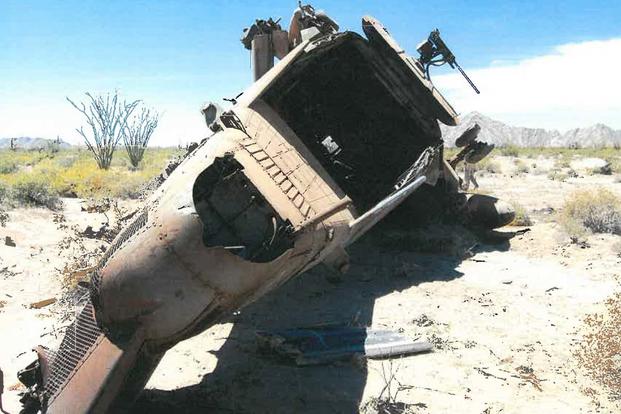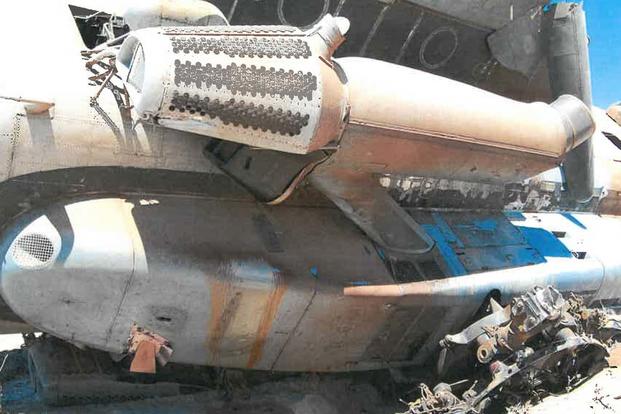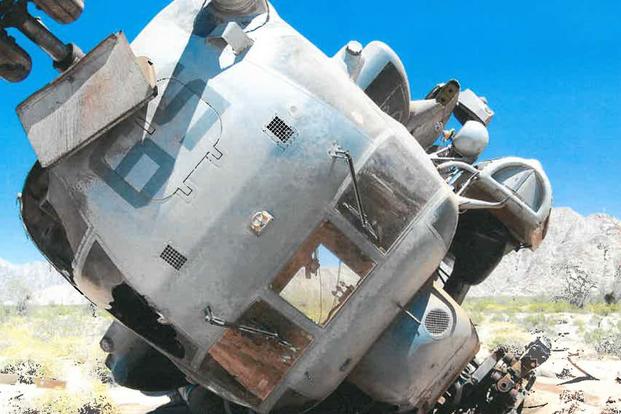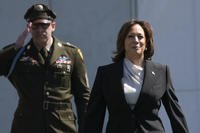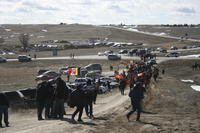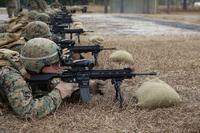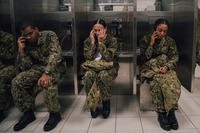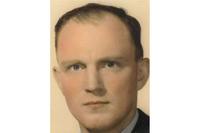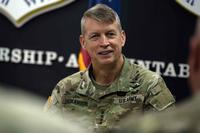The April hard landing of a Marine Corps CH-53E Super Stallion helicopter that caused severe damage to the aircraft was the result of a steep bank at low altitude, a command investigation shows.
The incident, which took place April 5 aboard Marine Corps Air Station Yuma, Arizona, was miraculous in that all five Marines aboard the aircraft walked away uninjured, even though the aircraft rolled multiple times before finally settling upside-down in the desert.
Photos of the crash site, obtained by Military.com through a Freedom of Information Act request, show the propeller completely sheared off, parts of the landing gear broken off, and holes in the body of the chopper.
"The investigation ... reveals a breakdown in mission planning that is underpinned by inadequate risk management, inattention to detail, lack of understanding of aircraft systems and aerodynamics, and violation of [Angle of Bank] limitations and [Training and Readiness] program manual hard deck altitude for defensive maneuvering," the commanding officer of Marine Aircraft Group 16, Col. Craig LeFlore, wrote in an endorsement of the investigation.
Related content:
- Remains of 3 Marines Killed in Osprey Crash Near Australia Recovered
- Poor Planning, Low Flight Hours Led to Marine Hornet Collision
- Check Out These Photos of a Crippled F/A-18 Hornet That Flew Home
"These culminating factors set dangerous conditions wherein the pilots put the aircraft into a high AOB turn in a reduced energy state close to the ground, ultimately resulting in power required exceeding power available and an unrecoverable rate of descent," he continued.
The pilots and aircrew were training in Yuma as part of the semi-annual Weapons and Tactics Instructor course.
On the day of the hard landing, they were set to participate in training that included rotary-wing defensive measures, fixed-wing defensive measures, and ground threat reduction training.
Although it is not cited as a direct cause of the mishap, both pilots were low on flight hours in the months before the crash. The lead pilot had logged 16.8 hours in the previous 30 days, but no additional hours in the 30 days preceding that. The secondary pilot had logged 7.8 hours in the previous 30 days, and 20 hours total in the previous 60 days.
The Corps has struggled in recent years to get enough flight hours for its pilots, amid maintenance and spare parts challenges that keep aircraft off the flight line. As a rough average, pilots are supposed to get 15 hours of flight time a month to keep their skills fresh.
According to the investigation, the hard landing took place just after 1 p.m. The helicopter had been flying low and banking hard throughout the day. Investigators found the crew descended below 100 feet 22 times, and 12 times got the "bank angle" verbal warning, meaning the aircraft had exceeded an angle of bank of 60 degrees, a dangerous threshold for the CH-53.
The crew however, recalled only a few instances when the angle had been exceeded.
The mishap took place as the Super Stallion attempted a hard right turn at just 50 feet off the ground.
"[The pilot] was at the controls and rolled into a 73-degree angle of bank right-hand turn and simultaneously lowered the collective by four to six inches and added right pedal," the investigation states.
The aircraft initially climbed to 125 feet and then began to descend, unable to gain enough power to overcome the steep angle.
The helicopter hit the ground, bounced, and then hit again, according to the investigation. When it finally came to rest, it was nearly upside-down.
At the time of impact, one of the CH-53's Marine crew members was ejected from the aircraft, his gunner's belt still attached. As the chopper rolled and spun, he was bounced and dragged with the aircraft before finally being able to detach himself.
Miraculously, he too walked away from the crash.
The investigation found multiple faults with the Marines on board the aircraft. The pilot not at the controls had failed to scan the instruments during the turn, it found, and both pilots and crew had failed to maintain situational awareness during the flight.
It also found that the pilots misunderstood the "bank angle" warning indicating danger for the aircraft. When it did not repeat, the pilots believed that the angle had been corrected. However, the system gives the warning only once and does not repeat.
The investigation recommended that all five Marines be evaluated, counseled or disciplined as deemed fit by the command, and that flight performance boards be convened for the two pilots.
It also recommended that the Naval Air Training and Operating Procedures Standardization be updated to clarify how the bank angle warning system of the Super Stallion works.
-- Hope Hodge Seck can be reached at hope.seck@military.com. Follow her on Twitter at @HopeSeck.
